Your Flight Path to Success: Navigating the Toughest Parts of Pilot Training
Becoming a commercial pilot is a journey filled with excitement, challenges, and the promise of soaring above the clouds. But before you can claim the skies, you’ll face a series of hurdles that test your determination and skill. From managing the cost of training to dealing with unpredictable weather, the path to your pilot’s wings is as demanding as it is rewarding. Here, we will navigate through these challenges together, ensuring you’re equipped to take them head-on and emerge victorious.
Article-at-a-Glance: Key Strategies for Aspiring Aviators
- Explore various financial aid options to offset the high costs of pilot training.
- Utilize weather delays to enhance your theoretical knowledge and simulator skills.
- Develop a solid financial plan to support your training journey.
- Embrace flexibility in your training schedule to accommodate weather-related changes.
- Maximize ground school learning to build a strong foundation in aviation theory.
Upfront Costs: Unlocking Financial Solutions for Pilot Training
The dream of becoming a commercial pilot often comes with a price tag that can seem daunting at first glance. However, with the right approach, the financial mountain can be scaled. It’s crucial to understand that investing in your pilot training is investing in your future. Let’s break down the barriers and explore the financial solutions at your disposal.
Finding Scholarships and Grants
Scholarships and grants are like hidden treasures in the world of aviation. They’re funds that you won’t have to pay back, and they can significantly reduce the financial burden of pilot training. Here’s how to find them:
- Check with aviation organizations like AOPA and EAA for scholarship listings.
- Visit your chosen flight school’s financial aid office to inquire about available grants.
- Connect with local aviation clubs and ask about community-sponsored scholarships.
- Search for scholarships specific to demographics such as women in aviation or military veterans.
- Apply early and apply often, as many scholarships have limited funds and high competition.
Creative Financing and Loan Options
When scholarships and grants aren’t enough, loans can fill the gap. Unlike traditional student loans, aviation loans are specifically tailored to cover the costs of flight training. It’s important to shop around and compare rates from different lenders. Some may offer lower interest rates or more flexible repayment terms that can make all the difference in your financial planning.
Part-Time Work and Budget Planning
Many aspiring pilots find that part-time work can help ease the financial strain of training. Whether it’s a job within the aviation industry or something unrelated, the extra income can be directed towards your flying hours. Additionally, creating a detailed budget plan is essential. Track all your expenses, prioritize your spending, and set realistic savings goals. This disciplined approach can help you manage your finances effectively as you progress through your training.
The Weather Factor: Staying on Course Despite Delays
Weather is an unpredictable player in the aviation game, capable of grounding flights and delaying training. While it’s easy to view these setbacks as lost time, they can actually be an opportunity for growth. Use these moments to deepen your understanding of aviation theory and to refine your skills in a way that clear skies wouldn’t allow.
Maximizing Downtime with Ground School Learning
When the weather won’t cooperate, ground school becomes your arena for advancement. Dive into your study materials, review flight plans, and dissect complex aviation systems. This is the time to solidify your theoretical knowledge, ensuring that when the skies clear, you’re more prepared than ever to take the controls.
Adjusting Your Training Schedule for Flexibility
Flexibility is a pilot’s ally, especially when it comes to training schedules. It’s wise to plan for the unexpected and have a strategy that allows you to pivot when weather or other factors disrupt your plans. Work closely with your flight instructors to create a schedule that has built-in buffer time. This way, you can shift lessons around without losing progress. Remember, the goal is to keep moving forward, even if it’s not always in a straight line.
Embracing Simulators for Uninterrupted Practice
Flight simulators are a technological marvel, providing a risk-free environment to hone your skills, no matter the weather outside. Use simulator time to practice emergency procedures, instrument navigation, and to get a feel for different aircraft types. It’s a cost-effective and efficient way to supplement your in-air training and ensure continuous improvement in your piloting abilities.
Mastering the Skies: Building Your Technical and Practical Skills
Technical proficiency and practical flying skills are the cornerstones of a successful pilot. It’s not just about logging hours; it’s about making every hour count. This means focusing on quality training, seeking feedback, and continually challenging yourself with new scenarios. As you progress, your confidence will grow, and the complex dance between pilot and aircraft will start to feel like second nature.
Aircraft System Familiarization
Every pilot must be intimately familiar with the aircraft they fly. This means understanding not just the controls, but also the engine, avionics, and all other systems. Start with the basics, like the pre-flight checklist, and gradually work your way up to more advanced systems. The more you know about your aircraft, the safer and more effective you’ll be as a pilot.
From Basic Maneuvers to Complex Operations
Your training will take you from basic maneuvers like takeoffs and landings to more complex operations, such as navigation and emergency procedures. Each step builds on the last, so it’s important to master the fundamentals before moving on. Pay attention to detail, ask questions, and practice until each maneuver becomes smooth and controlled.
The Role of Flight Simulators in Skill Development
Flight simulators play a critical role in skill development, allowing you to practice maneuvers and procedures as many times as it takes to get them right. They provide instant feedback and the opportunity to pause and reflect on your actions. This immediate loop of doing and reviewing accelerates the learning process and embeds the skills deep into your muscle memory.
Weathering the Storm of Information Overload
The amount of information you need to absorb during pilot training can be overwhelming. From aerodynamics to aviation law, the breadth of knowledge required is vast. It’s crucial to approach your studies methodically, breaking down complex topics into manageable chunks and building a strong foundation of understanding.
Structured Learning Techniques
Structured learning techniques can help you manage the deluge of information. Create a study schedule that aligns with your training syllabus, use flashcards for memorization, and engage in group study sessions for a more interactive learning experience. By approaching your studies with a clear plan, you’ll retain more information and feel less swamped.
Utilizing Tools for Effective Knowledge Management
As you accumulate knowledge on your way to becoming a pilot, it’s essential to keep that information organized and accessible. Digital tools like aviation apps, online databases, and cloud-based note-taking services can be lifesavers. They allow you to categorize information, search quickly, and even collaborate with peers. By integrating these tools into your study habits, you’ll streamline your learning process and keep critical information at your fingertips, ready for when you need it most.
Battling In-Flight Stress and Anxiety
Flying can stir up stress and anxiety, even among the most seasoned pilots. It’s a normal response to the high level of responsibility pilots bear. But it’s crucial to manage these feelings to ensure safety and performance. By developing strategies to combat stress and anxiety, you’ll be able to maintain composure and clarity when it matters most—in the cockpit.
Techniques for In-Flight Relaxation and Focus
Staying relaxed and focused in the cockpit is key to safe flying. Simple techniques such as deep breathing exercises can help mitigate stress. Mindfulness and staying present in the moment can also prevent your mind from wandering to “what ifs.” Always remember to focus on what you can control—the aircraft and your reactions—not on external factors that are out of your hands.
Developing Mental Resilience Through Visualization
Visualization is a powerful tool for pilots. By mentally rehearsing flights, you can prepare yourself for various scenarios, including emergencies. This practice not only builds confidence but also enhances your ability to react under pressure. Regularly visualizing successful flights and positive outcomes can fortify your mental resilience and prepare you for the real thing.
The Art of Believing in Yourself: Overcoming Self-Doubt
Self-doubt can be a significant obstacle in the journey to becoming a commercial pilot. It’s natural to question your abilities, but it’s important to recognize your progress and celebrate your successes. Confidence comes with experience, and every flight is a step towards becoming the pilot you aspire to be. Trust in your training, your instructors, and most importantly, yourself.
Success Stories: Pilots Who Overcame Self-Doubt
Take inspiration from pilots who have stood where you stand and have triumphed over self-doubt. Many successful aviators started out with uncertainties, but through perseverance and dedication, they achieved their dreams. These stories serve as a reminder that with hard work and belief in oneself, you can overcome any obstacle and reach new heights.
Combating Imposter Syndrome with Peer Support
Imposter syndrome, the feeling of not being as competent as others perceive you to be, is common in high-skill fields like aviation. One of the best ways to combat this is through peer support. Engaging with fellow pilot trainees and sharing experiences can validate your feelings and provide encouragement. Remember, you’re not alone on this journey, and there’s strength in the shared pursuit of a common goal.
Soaring Above the Anxiety of Checkride Nervousness
The checkride is the final step in your pilot training—a practical test where everything you’ve learned is put to the test. It’s normal to feel nervous, but don’t let anxiety cloud your abilities. You’ve prepared for this moment, and with the right mindset, you can demonstrate the skills you’ve worked so hard to acquire.
Preparation Tips for Your Big Day
Thorough preparation is the antidote to checkride nerves. In the days leading up to your checkride, review your notes, practice maneuvers, and visualize a successful outcome. Get a good night’s sleep before the big day, eat a healthy meal, and arrive early to give yourself plenty of time to get settled. Remember, the checkride is an opportunity to show off your skills, not a hurdle to fear.
How to Handle Checkride Pressure Like a Pro
Embrace the pressure of the checkride as a natural part of the process. Stay focused on the task at hand and rely on the training and knowledge you’ve accumulated. Communicate clearly with your examiner, and don’t be afraid to verbalize your thought process. By staying calm and collected, you’ll be able to navigate the checkride with the poise of a seasoned pilot.
Preparation Tips for Your Big Day
As the checkride approaches, it’s time to sharpen your focus and ensure you’re at the top of your game. Review your flight maneuvers, study airspace regulations, and go over your aircraft’s systems one last time. It’s not just about memorizing facts; it’s about understanding concepts so you can apply them under pressure. Pack your flight bag the night before, double-checking that you have all necessary documents, charts, and tools. This is your moment to shine, so take a deep breath, trust in your preparation, and step into the cockpit with confidence.
How to Handle Checkride Pressure Like a Pro
Pressure can either be a pilot’s downfall or the force that sharpens their skills. To handle it like a pro, adopt a positive mindset. Remember, your examiner is not an adversary but a mentor who wants you to succeed. If you make a mistake, stay calm and demonstrate your ability to recover. Show that you’re a competent decision-maker who can maintain a level head when it counts. This is what distinguishes a true pilot from a student, and it’s your time to prove you’re ready to join the ranks.
Embarking on Your Pilot Journey: Next Steps and Considerations
Your pilot journey is a marathon, not a sprint. As you move forward, it’s important to stay informed, remain patient, and keep your eyes on the prize. Every step you take brings you closer to your goal, and while the road may be long, the rewards at the end are immeasurable. Let’s look at what you need to consider as you embark on this exciting path.
Finding the Right Flight School for Your Goals
The flight school you choose will play a pivotal role in your aviation education. Look for schools with a strong track record of success and a curriculum that aligns with your career goals. Consider the location, fleet, instructor experience, and the school’s culture. It’s not just about the aircraft you’ll fly; it’s about the community and support you’ll receive. Take the time to visit potential schools, speak with students and instructors, and trust your gut feeling. The right school will feel like a second home, where your dreams are within reach.
The Importance of a Support System
No pilot becomes successful in a vacuum. Having a robust support system is critical as you navigate the challenges of pilot training. This includes family, friends, mentors, and fellow pilot trainees. They will be your cheerleaders, sounding boards, and sometimes your lifeline when things get tough. Don’t underestimate the power of encouragement and the value of shared experiences. Build your network and cherish these relationships—they will be your foundation throughout your aviation career.
Setting and Achieving Milestones in Training
Setting clear milestones gives your training structure and keeps you motivated. Whether it’s your first solo flight, passing a written exam, or mastering crosswind landings, celebrate each achievement. These milestones are proof of your progress and stepping stones to your ultimate goal. Keep a logbook not just of flight hours, but of lessons learned and skills acquired. This will not only satisfy training requirements but will also serve as a personal record of your journey to the skies.
Frequently Asked Questions (FAQ)
As you prepare for commercial pilot training, you’re bound to have questions. Here are some of the most common queries we encounter, along with straightforward answers to help you navigate your path forward.
How Much Should I Budget for Commercial Pilot Training?
Commercial pilot training is a significant investment in your future. Budgeting for this endeavor should include costs for ground school, flight hours, instructor fees, equipment, and examination charges. While prices vary depending on location and school, you should anticipate spending between $70,000 to $100,000 for a comprehensive training program. Remember, this is an estimate, and it’s wise to budget for unexpected expenses along the way. By planning financially for the full scope of training, you’ll be in a better position to focus on what truly matters—becoming the best pilot you can be.
What If Bad Weather Consistently Delays My Flight Training?
Bad weather is an inevitable part of flying, but consistent delays can be frustrating. If you find yourself frequently grounded, use the time wisely. Engage in additional ground school sessions, study weather patterns as a learning experience, and discuss alternate flying schedules with your instructors. You can also use flight simulation software to practice. Remember, every pilot faces weather challenges; it’s how you use this time that will set you apart and prepare you for real-world flying conditions.
How Many Flight Hours Do I Need Before I Can Take the Checkride?
The Federal Aviation Administration (FAA) requires a minimum of 1,500 flight hours for an Airline Transport Pilot certificate, but to qualify for a commercial pilot license, you typically need at least 250 hours. These hours include solo flying, cross-country, night, and instrument flying. Keep in mind that these are minimum requirements; some students may need more time to feel fully prepared. Your instructor’s endorsement is crucial, as it confirms you’re ready for the checkride, both in terms of hours and skill level.
What Should I Do If I’m Struggling with a Particular Skill or Maneuver?
Struggling with a particular skill or maneuver is a normal part of the learning process. The key is not to get discouraged. Speak with your instructor about your difficulties; they can provide additional training or alternative techniques. Practice is essential, so consider booking extra flight time to focus on the area you’re struggling with. Also, use visualization techniques and chair flying (practicing maneuvers while seated and imagining the flight) to reinforce muscle memory and boost your confidence.
In conclusion, the journey to becoming a commercial pilot is filled with challenges, but with determination, flexibility, and a strategic approach, these obstacles can be transformed into stepping stones towards your dream career. Embrace each hurdle as an opportunity to grow, and remember that every seasoned pilot has navigated these same skies. Stay focused on your goals, lean on your support system, and keep pushing forward. The view from the cockpit, with the world spread out beneath your wings, will be worth every effort. Clear skies and tailwinds to you, future aviator!
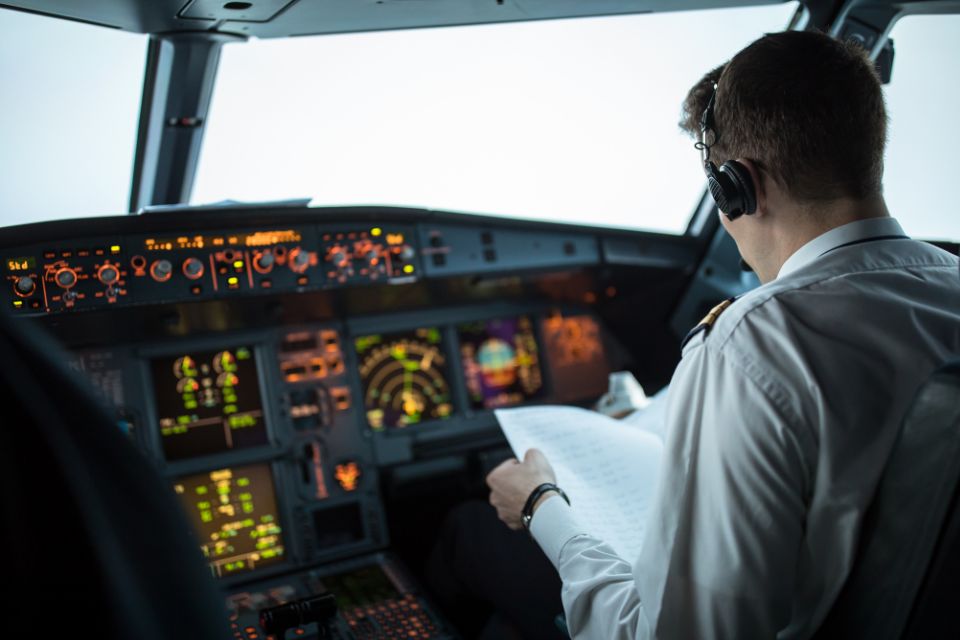


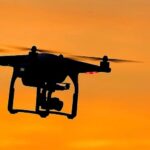
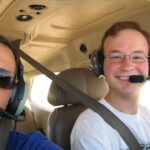
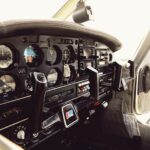
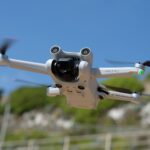
Leave a Reply